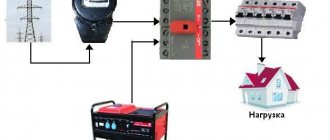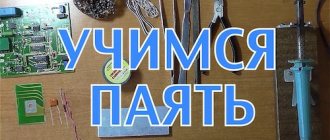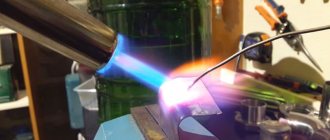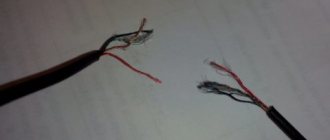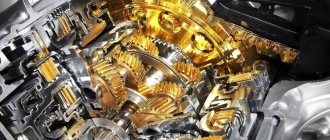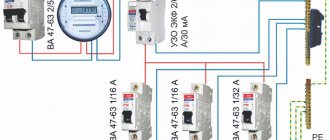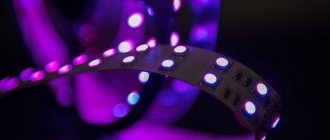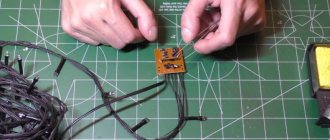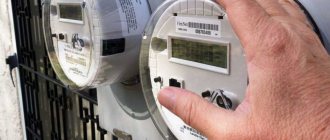To effectively join metal surfaces, it is best to resort to temperature effects. The simplest and most common method is soldering with a soldering iron. In this case, metal materials are joined under the influence of a local increase in temperature and welding at a lower temperature.
In order to correctly connect metal parts using a soldering iron, you need to know the main points that characterize the soldering process. To do this, it will be enough to read the article, watch the video lesson and try to master the technology in practice.
A Brief History of Metal Soldering
And there are also copper “hammers”, heated by blowtorches and used to solder copper car radiators and any steel things.
These soldering irons really resemble medium-sized hammers in shape; they have the largest tip (up to 3-4 cm), which allows for quick connection of metals over a large area.
Excavations of the oldest settlements in the world give scientists the right to say that thousands of years ago the Egyptians, Romans, Greeks and Chinese had rations. Their methods are still used today by jewelers who solder precious items with gold.
Soldering with copper began a little later, and only ten centuries ago - with brass.
Old Europe joined later than other continents - closer to the scientific foundations of these technological processes (temperature conditions, solder compositions, and so on).
Solders and fluxes
Now it’s time to accurately select the working solder and flux for it, because... soldering, unlike half-solder, must not only adhere tightly to the base metal, but also be strong itself. A summary of information about solders and fluxes of widespread use from the old reference book is given in Fig. In relation to the present time, there is not much left to add to it.
Characteristics of solders and fluxes for wide application
Solders
Solders from POS-90 to Avia-2 are soft for low-temperature soldering. Only electrical contact is guaranteed. POS-30 and POS-40 solder copper, brass, bronze with inactive fluxes, and the same with steel, and steel with steel with active ones. POSSr-15 can be soldered galvanized sheets with inactive fluxes; other solders corrode the zinc to steel and the soldering soon falls off.
34A, MF-1 and PSR-25 hard solders, for high-temperature soldering. Solder 34A can be used to solder aluminum in a flame (see below, about soldering aluminum) with special fluxes, see ibid. MF1 solder is used to solder copper to steel with activated flux. “Low strength requirements” in this case means that the strength of the joint is closer to the strength of copper than steel. When soldered with a dry soldering iron (see below), PSR-25 is suitable for soldering jewelry, Tiffany stained glass, etc.
Fluxes
Soldering fluxes are divided into neutral (inactive, acid-free), which do not react chemically with the base metal or interact to an insignificant extent, activated, which chemically act on the base metal when heated, and active (acidic), which act on it even when cold. In regard to fluxes, our century has brought the most innovations; mostly still good, but let's start with the unpleasant ones.
First, technically pure acetone for washing rations is no longer widely available due to the fact that it is used in the underground production of drugs and itself has a narcotic effect. Substitutes for technical acetone are solvents 646 and 647.
Secondly, zinc chloride in activated flux pastes is often replaced with sodium teraborate - borax. Hydrochloric acid is a highly toxic, chemically aggressive volatile substance; Zinc chloride is also toxic, and when heated it sublimates, i.e. evaporates without melting. Borax is safe, but when heated it releases a large amount of water of crystallization, which slightly impairs the quality of soldering.
The good news is that there is now a wide range of fluxes on sale for all soldering occasions. For ordinary soldering work, you will need (see figure) inexpensive SCF (alcohol rosin, former CE, second in the list of acid-free fluxes in Table I.10 in the figure above) and soldering (etched) acid, this is the first acid flux on the list. SKF is suitable for soldering copper and its alloys, and soldering acid is suitable for steel.
SKF rations must be washed: rosin contains succinic acid, which destroys the metal with prolonged contact. In addition, accidentally spilled SCF instantly spreads over a large area and turns into an extremely sticky muck that takes a very long time to dry, the stains from which cannot be removed from clothes, furniture, or the floor and walls. In general, SKF is a good flux for soldering, but not for slow-witted people.
A complete substitute for SCF, but not so nasty if handled carelessly, is TAGS flux. Steel parts are more massive than is permissible for soldering with soldering acid, and more durable, they are soldered with F38 flux. The universal flux can be used to solder almost any metal in any combination, incl. aluminum, but the strength of the joint with it is not standardized. We'll come back to soldering aluminum later.
Practice is the basis of mastery
It starts with perseverance. Not everything can be soldered quickly. Therefore, below are tips on how to solder wires correctly, and then move on to gold or silver.
- How to make a transformer with your own hands - step-by-step instructions, diagram, drawings, list of materials + photo of a finished homemade transformer
Which hidden wiring detector is better? TOP 10 best manufacturers with photos and descriptions
Technological maps in construction - what is it?
We will only talk about copper wires or contacts of parts tinned at factories.
Clean off the old tin from the veins. If you take a clean wire, you still need to scrape off the coating; if they are in a bundle, then on each thread.
Mandatory degreasing of the tip and parts for soldering.
Use a tip to melt part of the flux, add a minimum of tin to it, and insert the wires for tinning there, running the tip along them. The threads will be covered with a white layer of solder. You've tinned the ends.
Melt the tin again and put a drop on the tip of the tip, touch the parts to be soldered.
- How to fix a laptop that won't charge
- Insulated dielectric screwdrivers up to 1000V - tips on how to choose the best manufacturer
Dielectric insulated tool for work - which one is better to choose? Review of manufacturers, photos + video
The hot alloy will spread along the wires according to the law of diffusion. After removing the tip for 5-10 seconds, let the top part harden and turn them over and solder them on the other side in the same way. This is briefly how to tin wires with a soldering iron.
Working with solder
When heated sufficiently, the molten solder should become flowable. For small jobs, you can take a drop of alloy on the tip of the tool and transfer it to the parts to be joined. But it is more convenient to use thin wire (rod) of different sections. Often inside the wire there is a layer of rosin, which helps to solder correctly with a soldering iron without distraction from the process.
With this method, a hot tool heats the surface of the connected conductors or parts. The end of the solder rod is brought to the tip and pushed a little (1-3 mm) under it. The metal instantly melts, after which the remainder of the rod is removed, and the solder is heated with a soldering iron until it acquires a bright shine.
When working with radio components, you need to take into account that heating is dangerous for them. All operations are performed within 1-2 seconds.
When soldering connections of single-core wires of large cross-section, you can use a thick rod. When the tool is heated sufficiently, it also melts quickly, but you can distribute it over the surfaces to be soldered more slowly, trying to fill all the grooves of the twist.
What is rosin needed for?
She is the catalyst of the process. This is a hard resin, and when melted it smells the same as green pine needles, because it is made from turpentine - part of the resin of this tree.
It is simply adored by radio amateurs who create their own products and repair factory ones efficiently and quickly. The tip of the soldering iron and the wires are brought to the resin, melt it a little and the wires themselves fuse.
You just need to heat it so that the excess tin glass. But this solder is not suitable for every metal. But copper and brass, bronze connect better with it.
Features of soldering wires
Above we talked about tinning wires. It is necessary to add a few words about the process of their strong soldering. It is somewhat different from the usual one with other materials.
Thin wires are movable, they need to be pressed tightly and then soldered. There are different methods for connecting and soldering wires; we’ll tell you about some.
You can twist two copper wires, if they are thin, after cleaning and tinning them, then solder them.
If the wiring is multi-stranded, then you need to clean all the threads, then squeeze them tightly with your fingers and twist them clockwise as tightly as possible. Then dip it in rosin and tin it with a sting.
Do the same with the other end of the soldering. Then, pressing both ends with pliers, melt all the tin well (from tinning as well) and connect it into a core.
Instead of using pliers, you can do this. Peel a few centimeters of thin copper wire, tin it, and then tightly wrap it around one end of the twist, secure it, and do the same at the other end.
And then dip into molten tin until copper is visible on the twist. Remove from bath and let set.
It is advisable to first put a heat-shrink tube on one end of the wire, after soldering, push it through and cover the entire tin part.
Heat it with matches so that it covers the insulated parts. Then there will be no need to wrap electrical tape. That's all the instructions on how to properly solder with flux and solder.Popular questions
How should I strip the ends of the wires?
It is not recommended to use coarse abrasives for cleaning. Their particles get stuck in the surface and it is not possible to completely remove them. And during operation, abrasives provoke the development of the oxidation process. High-quality cleaning will be ensured by: scraper, knife, file, needle file. When working with conductive wires, it is recommended to pre-coat them with activated flux, the remains of which should be removed after soldering is completed.
What power should I choose a soldering iron for household needs?
Power determines the function of the tool. If the main part of the work is planned with profiles and thick conductors, then a device up to 65 W is suitable. Soldering of wires with a diameter of up to 0.6 mm is carried out with a soldering iron up to 25 W.
Does the method of twisting play a role in the strength and functionality of the connection?
Each method has its own purpose:
• simple twists are suitable for single-core and stranded wires, but they must first be cleared of the insulating layer;
• bandage connections are used when working with thick live wires;
• grooved ones are made with conductors having fusible insulation;
• simple but consistently performed twisting (British) is used to connect current-carrying cables with a cross-section of up to 1.4 mm2.
How long does it take to heat the solder?
When soldering, some people put solder on a soldering iron. There is no need to do this. It is enough to place the solder over the twisted conductors and warm it up, barely touching the tip. 3-4 seconds are enough for the substance to melt.
By what signs can you understand that soldering has been completed successfully?
The following signs indicate a successful job:
• a layer of solder must cover all ends of the conductors;
• soldering color should be shiny, not matte;
• under mechanical influence (light!) the connection maintains its integrity.
Is there any preparation required for a new soldering iron?
Yes, the tip of a new tool must be cleaned of oxide and coated with tin. After heating, the tip is rubbed against an ammonia stone, after which a drop of solder is melted on it. The preparation of the soldering iron is completed by the usual cleaning of the tip.
Photo recommendations on how to solder correctly with a soldering iron
Did you like the article? Share

0
